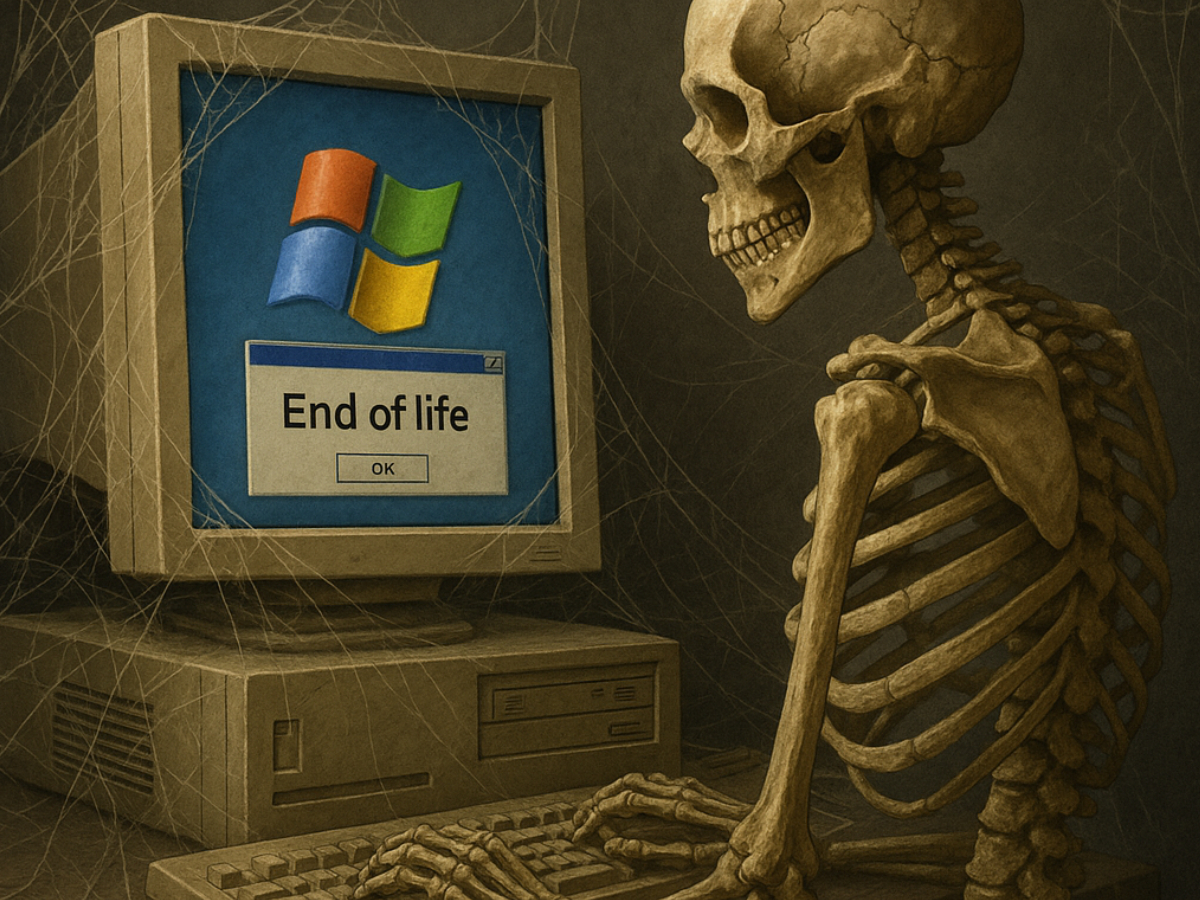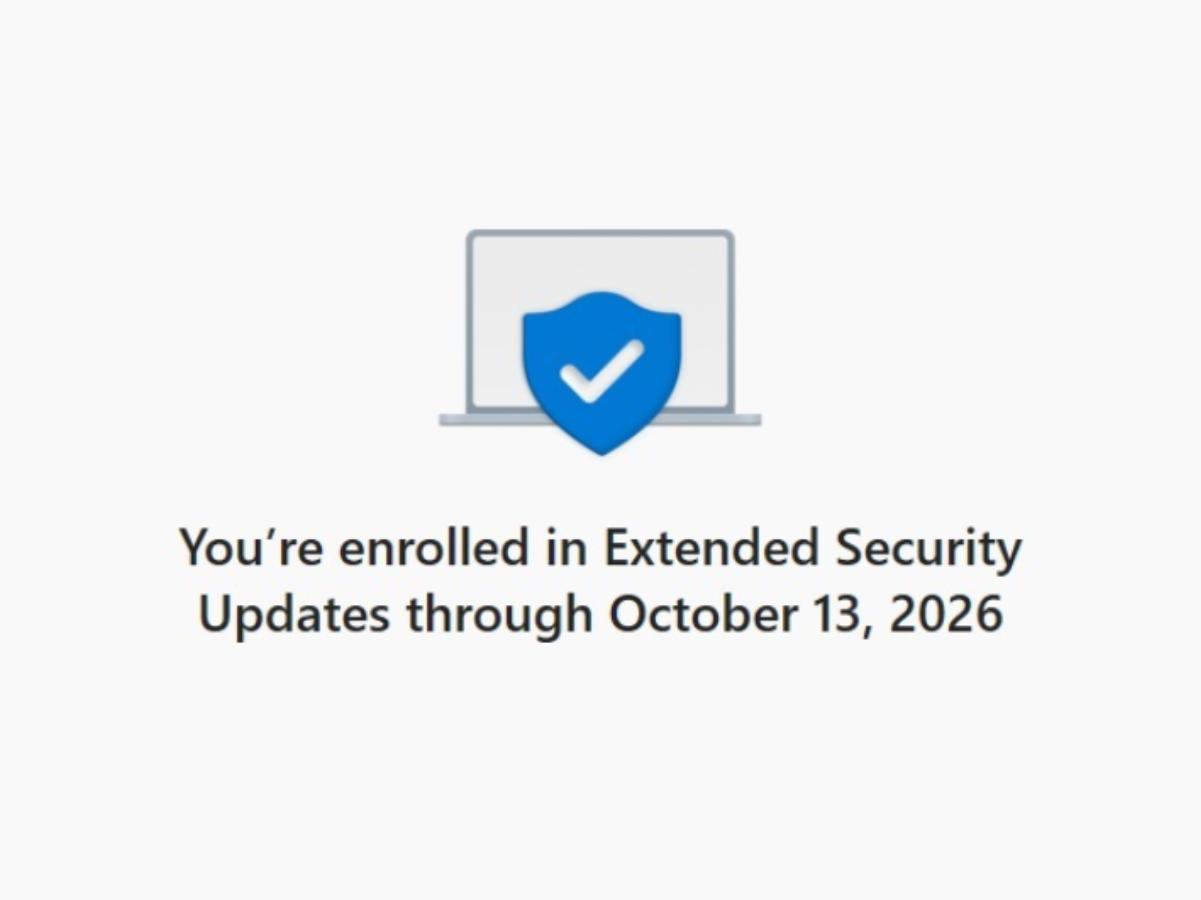With all the focus on Windows 10 ending service on 14th October this year, it’s understandable that most people are paying little to no attention to the long list of other Microsoft products which are also winding up on the same day. In fact, October 14th is shaping up to be an extinction-level event for a lot of older Microsoft products, and it’s likely that many businesses (especially small businesses) are going to end up with unsupported products on their systems on October 15th. Unfortunately, bad actors know this all too well and are primed to take advantage!
Products ending support
So here’s the list - much less in the news, but also ending support are:
- Access 2016
- Access 2019
- Dynamics 365 Business Central on-premises (Fixed Policy)
- Excel 2016
- Excel 2019
- Exchange Server 2016
- Exchange Server 2019
- Microsoft Office 2016
- Microsoft Office 2019
- Microsoft Report Viewer 2015 Runtime
- OneNote 2016
- Outlook 2016
- Outlook 2019
- PowerPoint 2016
- PowerPoint 2019
- Project 2016
- Project 2019
- Publisher 2016
- Publisher 2019
- Skype for Business 2016
- Skype for Business 2019
- Skype for Business Server 2015
- Skype for Business Server 2019
- Visio 2016
- Visio 2019
- Visual Studio 2015
- Visual Studio Team Foundation Server 2015
- Windows 10 2015 LTSB
- Windows 10 IoT Enterprise LTSB 2015
- Windows 10 Team (Surface Hub)
- Windows Defender Exploit Guard
- Windows Defender for Windows 10
- Windows Server 2012, Extended Security Update Year 2
- Windows Server 2012 R2, Extended Security Update Year 2
- Word 2016
- Word 2019
Do I really Need To Upgrade?
In short, yes, you do. When software reaches its official end of support, it no longer receives security updates, bug fixes, or technical assistance from the vendor, in this case, Microsoft. While the application will usually continue to function, using unsupported software introduces significant risk. Vulnerabilities in end-of-life software are no longer patched, making it an easy target for threat actors who actively scan for known exploits, and believe you me, they are scanning. Failing to keep your software up to date jeopardises operational continuity and can also put personal data, intellectual property, and connected systems at risk.
From a compliance standpoint, continuing to run unsupported software may also mean falling out of alignment with industry standards and could even cost you a hard-won certification. ISO/IEC 27001, the globally recognised standard for information security management, expects organisations to maintain secure configurations and apply vendor-recommended updates as part of their risk treatment plans. Similarly, the UK’s Cyber Essentials scheme explicitly requires supported software to be used wherever possible. Even outside of formal certification, NCSC best practice guidance strongly advises that unsupported software be removed or replaced.
Ultimately, failing to upgrade in time can have cascading consequences—not just in terms of cyber risk, but also with respect to contractual obligations, insurance coverage, legal consequences, data breach fines and regulatory reporting in the event of an incident.
Although it’s yet another cost, it is time to find a replacement if you’re relying on any of the above.
Recommended replacements table
Here’s a quick round-up of some upgrade options which are worth considering - for the most part, there’s a newer version or edition to migrate to, but some users might find themselves needing to look beyond Microsoft for solutions (sorry Publisher fans!). Please note that this list contains general suggestions and might not be applicable for all use cases. Hopefully, though, it’s a start!
| Product ending support | Replacement/upgrade |
|---|---|
| Access 2016 & 2019 | Upgrade to Access 2024 (stand‑alone) or use Microsoft 365 Business Standard/Business Premium, which includes Access and Publisher for PC only. |
| Dynamics 365 Business Central on‑premises (Fixed Policy) | Move to Dynamics 365 Business Central (cloud). |
| Excel 2016 & 2019 | Upgrade to Excel 2024 (stand‑alone) or use Microsoft 365. |
| Exchange Server 2016 & 2019 | Microsoft recommends migrating on‑premises deployments to Exchange Server Subscription Edition (SE) or to Exchange Online. Exchange SE (released July 2025) is the only supported on‑premises version after Oct 2025. Exchange Online offers cloud mailboxes with 50–100 GB storage and integrated security. |
| Office 2016 & 2019 suites (Word, Excel, PowerPoint, Outlook, OneNote, Publisher, Access) | Replace with Microsoft 365 Business or Office 2024. Microsoft warns that Office 2016/2019 will stop receiving security updates on 14 Oct 2025. For one‑time purchases, Office 2024 is available in home/student and home/business editions. |
| Microsoft Report Viewer 2015 Runtime | Replace with SQL Server Reporting Services (SSRS) integrated in Visual Studio 2022. SSRS is free with SQL Server and Visual Studio and provides modern report viewing and export. |
| OneNote 2016 | Use the OneNote App. |
| Outlook 2016 & 2019 | Upgrade to Outlook 2024 (stand‑alone) or use Microsoft 365. |
| PowerPoint 2016 & 2019 | Upgrade to PowerPoint 2024 or subscribe to Microsoft 365. |
| Project 2016 & 2019 | Move to Microsoft Project Plan 3 or Plan 5 (cloud). The plans include web and desktop apps and advanced portfolio management. |
| Publisher 2016 & 2019 | Microsoft announced that Publisher will be retired in Oct 2026; there will be no new versions. Microsoft suggests using Word or PowerPoint (with templates from Microsoft Create) for common desktop‑publishing tasks. The latest perpetual version is Publisher 2021 if you’re not ready to go cloud-based. |
| Skype for Business 2016 & 2019 (client) | Transition to Microsoft Teams. Microsoft Teams offers chat, meetings, channels and is the successor to Skype for Business. Teams Essentials (stand‑alone) provides meetings for up to 300 participants and unlimited chat. Teams Phone allows PSTN calling if you still need calling (although for most businesses, teams is widely enough used to replace calling) |
| Skype for Business Server 2015 & 2019 | Migrate on‑premises deployments to Microsoft Teams Rooms/Teams Phone or to Microsoft 365 (cloud). |
| Visio 2016 & 2019 | Upgrade to Visio Plan 1 (web‑based) or Visio Plan 2 (web + desktop) or purchase Visio Standard/Professional 2024. |
| Visual Studio 2015 | Microsoft recommends upgrading to Visual Studio 2022 (latest LTS channel). Visual Studio 2022 adds AI‑powered code completion, integrated GitHub, .NET 8/9 support and will be supported to Jan 2032. |
| Visual Studio Team Foundation Server 2015 | Support ends Oct 14 2025. Upgrade to Azure DevOps Server 2022 or move to the cloud Azure DevOps Services. Azure DevOps includes Boards, Repos, Pipelines and Test Plans. |
| Windows 10 Enterprise LTSB 2015 & Windows 10 IoT Enterprise LTSB 2015 | Both editions reach end of support 14 Oct 2025. Home users can enrol in Extended Security Updates for Windows 10, businesses should plan to deploy Windows 11 Enterprise LTSC 2024 (when released) or move to Windows 11. Windows 11 provides security improvements, TPM 2.0 support and longer servicing. A new PC with Windows 11 may be required. |
| Windows Server 2012 & Windows Server 2012 R2 (Extended Security Update Year 2) | Windows Server 2012/R2 left extended support Oct 10 2023; Year 2 of ESUs runs until Oct 13 2026 Instead of paying high ESU costs, Microsoft recommends migrating to Windows Server 2022 or Azure Arc‑enabled servers. ESUs cost 75–100 % of the licence price annually; by Year 3 ESUs for Windows Enterprise cost $200 per device and give us an idea about where Windows 10 ESU pricing is going to go! |
| Word 2016 & 2019 | Upgrade to Word 2024 or subscribe to Microsoft 365. |






Start the conversation